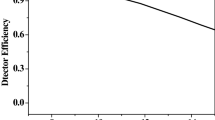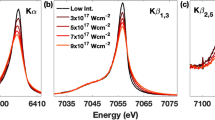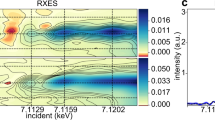Abstract
As is well known, X-ray absorption phenomena may be characterised in the following manner: In general the absorption decreases with decreasing wave-length of the X-rays. A sudden increase of absorption, however, takes place at some definite wave-lengths (‘absorption edges’) characteristic for the absorbing element in question. Each of those absorption edges is connected with the removal of an electron from a corresponding sub-group of electrons in the atom. As for the heavier elements there are one sub-group of electrons in the K-shell, three in the L-shell, five in M-shell, we might expect the existence of one K-absorption edge, three L-edges, five M-edges. Such edges have really been found for several elements by different workers.
This is a preview of subscription content, access via your institution
Access options
Subscribe to this journal
Receive 51 print issues and online access
$199.00 per year
only $3.90 per issue
Buy this article
- Purchase on Springer Link
- Instant access to full article PDF
Prices may be subject to local taxes which are calculated during checkout
Similar content being viewed by others
Author information
Authors and Affiliations
Rights and permissions
About this article
Cite this article
COSTER, D., VAN DER TUUK, J. The Fine Structure of the X-ray Absorption Edge in the K-Series of Argon and its Possible Interpretation. Nature 117, 586–587 (1926). https://doi.org/10.1038/117586a0
Published:
Issue Date:
DOI: https://doi.org/10.1038/117586a0
This article is cited by
Comments
By submitting a comment you agree to abide by our Terms and Community Guidelines. If you find something abusive or that does not comply with our terms or guidelines please flag it as inappropriate.



